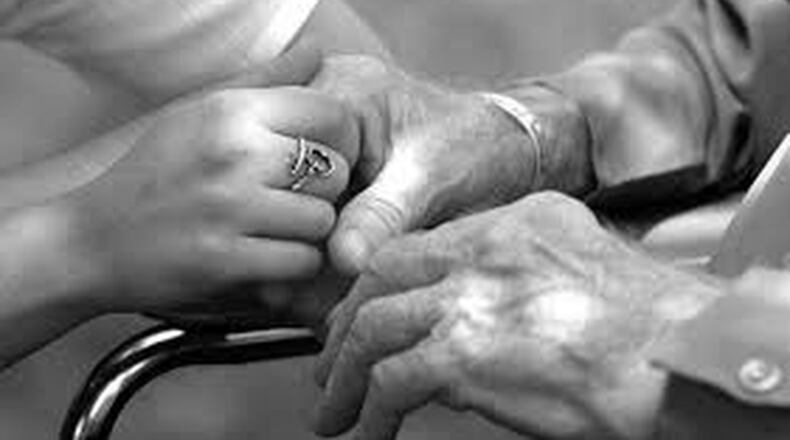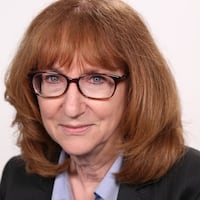Elderly people were the target, and wherever they might congregate, the company dispatched recruiters.
Workers rode along on Meals on Wheels deliveries and went door-to-door in government-subsidized housing. Then they’d pitch what sounded like home care services paid for by the government. Instead, the elderly were being enrolled in Medicare-funded hospice based on what the government says were bogus determinations that they were close to death.
Those are allegations in a whistleblower lawsuit against hospice provider AseraCare. Federal prosecutors want the company to pay more than $200 million in reimbursement, fines and fees for running what they said was little more than a money-making scheme.
A federal jury agreed, finding that AseraCare had committed fraud by filing false claims for Medicare reimbursement. But the presiding U.S. district court judge threw out the jurors’ verdict. She ruled, in part, that the case boiled down to a battle of medical experts, and differences in professional medical judgment alone couldn’t prove the case.
Now, attorneys around the country are awaiting a decision from the 11th Circuit, which heard arguments a year ago on the government’s appeal of that ruling. The appeals court decision could tie the hands of prosecutors in a wide range of health care fraud cases. Or, it could spell continued trouble not only for hospices, but also for nursing homes, hospitals, dentists and other health care providers. The issue of medical necessity has been at the heart of many health care fraud cases.
“This is going to be a pivotal case,” said Justin Linder, a New Jersey attorney who concentrates on hospice and home health care and the federal False Claims Act.
If the court upholds the district judge’s ruling, “then you have some very far-ranging ramifications, not only to hospices but to any health care providers whose health care reimbursement is conditioned on providing medically necessary services,” he said.
More fraud cases will likely proceed to trial, rather than settle out of court, he said.
“It could also wipe out a number of cases that already have been filed,” said Linder, with the firm of Dughi, Hewit & Domalewski, who represents the health care industry in cases involving the False Claims Act.
The government says that some hospice providers have sought out patients who aren’t close to death because they don’t need as intense of services as terminally ill patients require. And by keeping patients on hospice longer, a company can continue to collect payments for each patient – around $200 every day for routine home care, whether the hospice agency provides services on any given day or not. Payments for other levels of care can top $800 a day. Hundreds of millions of dollars are drained from the Medicare trust fund as a result of fraud, the government has found.
Hospice fraud has other consequences as well. When patients enter hospice, Medicare pays only for services that help alleviate pain or suffering and help them cope as they die — not for medical treatments to cure them. Some patients don’t understand that. A Mississippi woman who went in for a yearly mammogram was denied Medicare-funded service because she was on hospice, a federal investigator said.
In other cases, such as a recent one out of California, patients were led to believe that they had life-ending illnesses when they did not.
In Mississippi, fraud involving “mom and pop” hospices has been epidemic, said Mike Loggins, a special agent with the Office of the Inspector General of the Department of Health and Human Services in the Southeast Region. Patient recruiters there would go door to door looking for elderly people to sign up, getting paid $300 to $500 for each patient they got, he said.
One recruiter – a gang member and convicted sex offender – told investigators it was easier and less risky than dealing drugs, Loggins said.
Doctors who got kickbacks from hospices then would certify that the patients had only a few months to live, sometimes without even seeing the patients.
To prove the cases, federal investigators would knock on the doors of hospice patients to ask if they were dying. “And they immediately laugh or get angry and say, ‘Who told you I’m dying?’ ” Loggins said.
Proving cases against corporate providers, though, is more complex. “The medical necessity issue is what’s killing us with some of these corporate hospices,” said Derrick Jacobson, special agent in charge with the inspector general’s office for the region.
In the AseraCare case, originally brought by former employees in Georgia, Alabama and Wisconsin, the government had a physician review medical records of hospice patients. He found that most were not within six months of dying – the criterion for enrolling in Medicare-funded hospice. In a two-month trial, jurors heard from both him and defense experts, then found that in the majority of cases presented, the patients were not terminally ill.
Many AseraCare patients lived for years on hospice or were discharged from hospice alive.
In setting aside the jury’s verdict in March 2016, U.S. District Judge Karon Bowdre of the Northern District of Alabama said a mere difference of opinion among physicians is not enough to establish that the claims were false. “The government has presented no evidence of an objective falsehood for any of the patients at issue,” she wrote.
If her ruling stands, Linder said, the government would have to look for other evidence to show there was an intent to defraud the government, such as kickbacks to physicians to certify that patients were dying.
If the 11th Circuit overturns the judge’s ruling, it may not signal an immediate change for health care providers, said attorney Jay Mitchell with King & Spalding in Atlanta. But, he said, “it certainly could embolden the government to go after more medical necessity cases.”
That is a concern because, ultimately, the case is about physicians making decisions based on their judgments and medical experience, said Mitchell, who works with health care clients at the law firm and formerly was chief legal officer at Piedmont Healthcare. “We never want to make physicians feel like they are somehow being called into question,” he said.
“You have all sides of the legal community looking at this case,” Mitchell said. “I think it is a case that will be looked at…and cited in the future.”
Attorneys involved in the AseraCare case declined comment.
In recent years, a number of hospices have settled cases that involved allegations they enrolled patients who were not dying, though the companies didn't admit fraud. Among the cases involving companies with services in Georgia was a $2.4 million settlement last year by Compassionate Care Hospice Group. Nurses who worked for the hospice in Atlanta said the company marketed itself to patients with the promise of free drugs, supplies and services, paid kickbacks to doctors to refer patients, and used imprecise diagnoses such as "general debility" or "failure to thrive" to make it difficult for the government to detect fraud.
The nation's largest for-profit hospice chain, Vitas – owned by the company that owns and operates Roto-Rooter Group plumbing services – also settled last year, agreeing to pay $75 million in a case that involved ineligible patients and other violations.
In 2016, Optum Palliative and Hospice Care agreed to pay some $18 million for enrolling patients who were not terminally ill. In 2015, Guardian Hospice/AccentCare agreed to pay $3 million. In 2014, Hospice Compassus agreed to pay $3.9 million, and Serenity Hospice of Dublin agreed to pay more than a half-million dollars. In 2013, America Hospice Management, agreed to pay $12 million.
Many fraud cases against hospices settle out of court. That’s largely because if a hospice loses at trial, it can face having to pay triple damages along with penalties under provisions of the federal False Claims Act.
What you need to know about Medicare hospice
Determining when someone will die is not an exact science, so Medicare requires that both a patient’s doctor and the hospice’s medical director certify that a patient is expected to live six months or less if a disease takes its normal course.
Doctors are not allowed to take payments for referring patients to a particular hospice — such kickbacks are illegal. And patients cannot be forced into hospice if they want to continue medical treatment in hopes of a cure. Patients also have the right to leave hospice at any time.
Medicare covers two initial 90-day periods of service from a hospice, then subsequent 60-day periods if a patient continues to be certified as terminally ill. If patients stabilize or improve, though, they are supposed to be discharged from hospice.
Hospices are paid a set amount per day for each patient, whether or not services are provided every day. That payment is to cover all the palliative services a patient might need, such as medications to ease pain or manage chronic symptoms, home health services to maintain a healthy environment, physical or occupational therapy for symptom control or to allow the patient to maintain basic functional skills, and visits by grief counselors and social workers to ease mental stress. Hospice also will provide some medical equipment, such as walkers or wheelchairs.
Hospice patients no longer are covered by Medicare for treatment to cure their terminal illness. For example, Medicare would no longer cover chemotheraphy for cancer patients.
Hospices are responsible for other medical care a patient might need. For example, if a patient suffering from heart failure breaks a hip, the hospice would be responsible for arranging hospital care related to the fracture.
Many patients receive hospice care in their homes, although patients in nursing homes or hospitals also may receive such services.
About the Author
The Latest
Featured



